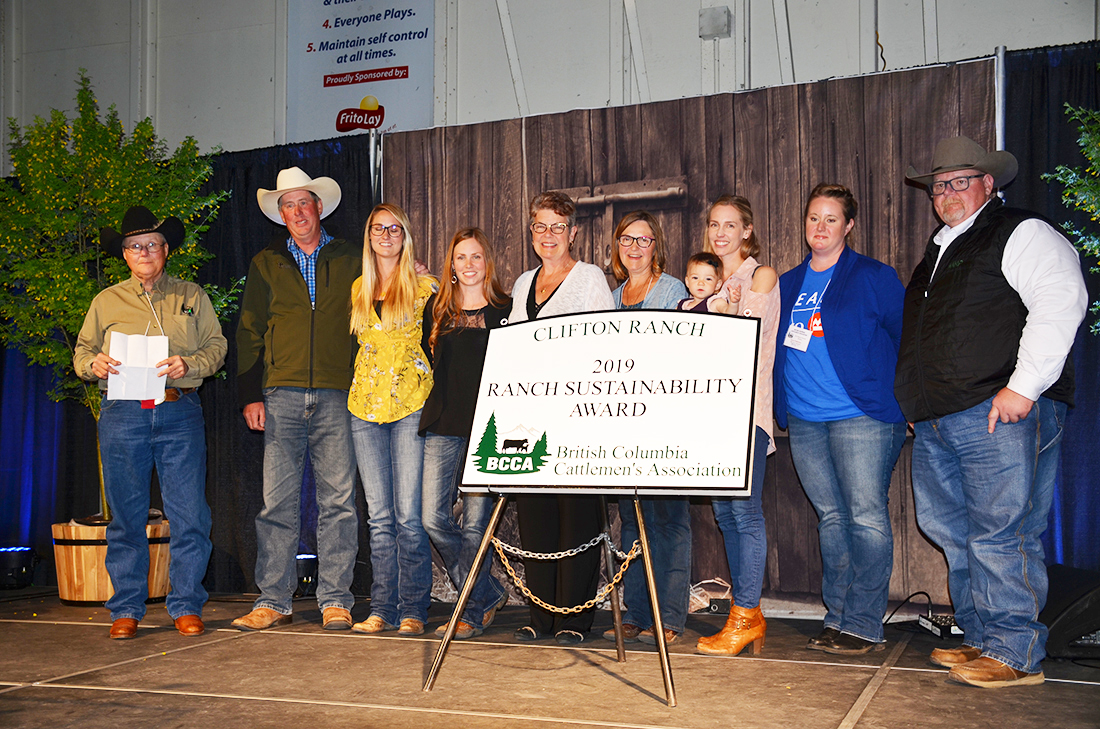The grasslands of the South Okanagan are, according to BC Parks, “one of the four most-endangered ecosystems in Canada.” They’re so significant that discussions to gather them into a national park reserve are in the works.
But protecting grasslands doesn’t necessarily mean fencing them off from cattle, as the Clifton family of Keremeos has shown.
During the BC Cattlemen’s Association annual general meeting in Williams Lake at the end of May, the family-run Clifton Ranch receive the association’s ranch sustainability award. The award considers a ranch’s livestock management practices, land stewardship, animal care, benefit to the environment and contributions to the livestock industry or the local community.
“This year’s recipient was selected for their outstanding commitment to sustainability,” says Renee Ardill, chair of the BCCA environmental stewardship committee. “They are recognized for the large number of species at risk that they support on their landscape, the water developments they have created, and the partnerships they have built to better manage the land.”
One of those partnerships is with the Nature Trust of BC.
“We have land adjacent to an area at White Lake that the Nature Trust of BC had bought to preserve,” explains Wade Clifton in a video BCCA produced to highlight the ranch’s achievements. “They had fenced it off. There were going to be no cattle on the land and they were going to let it go back to a more natural state.”
The ranch was looking to expand its grazing area, however, and started a dialogue with the trust.
“Nature Trust realized that what they were doing wasn’t working,” says Clifton. “We wondered if we were crazy, but we started going to meetings with biologists who said the cattle shouldn’t be there, they will wreck this.”
Careful management of rotational grazing, sometimes only two or three weeks every two years, began to restore the grasslands.
“We were actually able to stimulate the native grasses and take out some of the weeds,” says Clifton. “The land is changing from a spear grass to more of a native species of blue bunchgrass.”
Keeping cattle off the land may not support the native species at risk, says Clifton.
“The cattle have been part of that ecosystem for over 100 years,” he notes. “The reason that most of the species that live there now are there is because of the ecosystem that the cattle have contributed to.”
Biologists now support a system that integrates grazing rather than rejects cattle.
“They see the benefits and understand the cattle are now part of the ecosystem,” says Clifton.
The video documenting the ranch’s practices is available at [https://vimeo.com/339163285].
SIGN UP FOR FREE FARM NEWS UPDATES DELIVERED TO YOUR INBOX EVERY WEDNESDAY MORNING.


 Ottawa funds young workers
Ottawa funds young workers